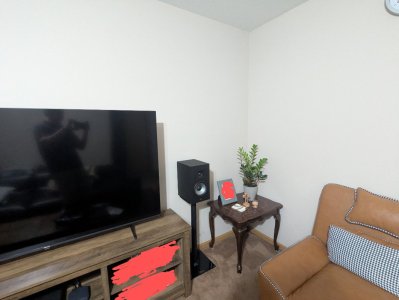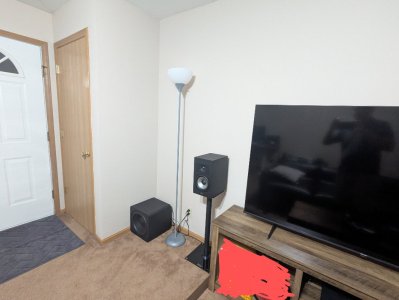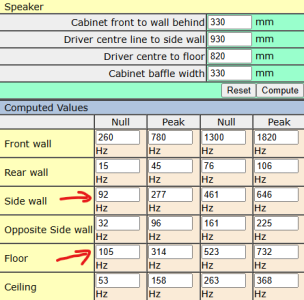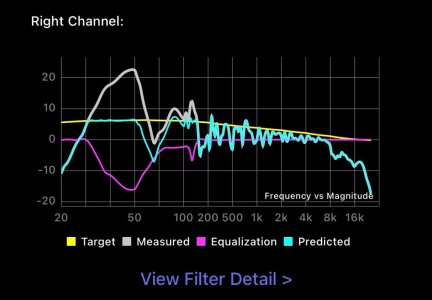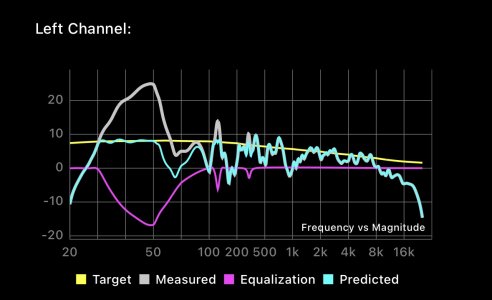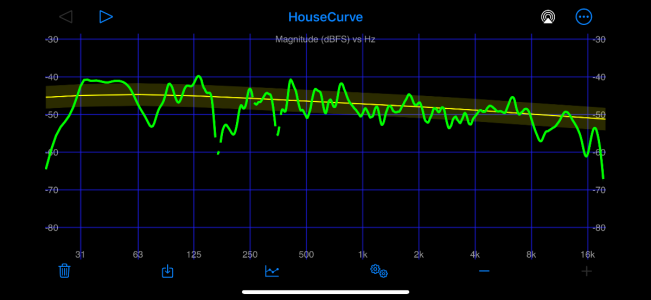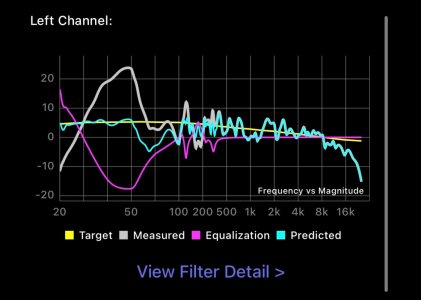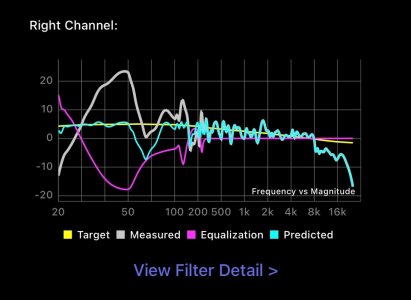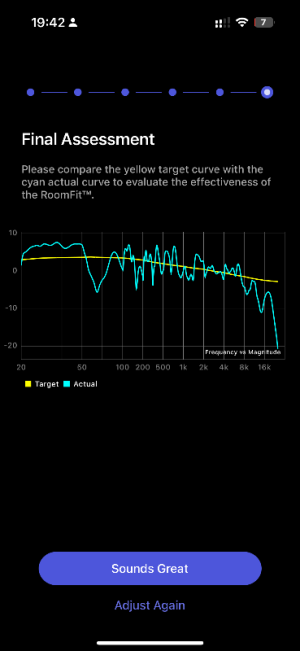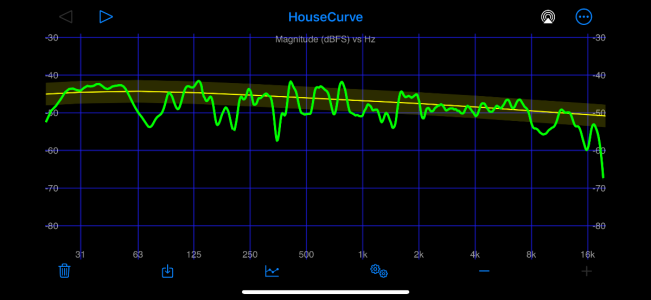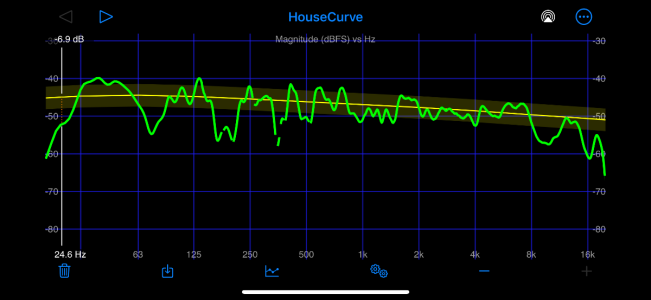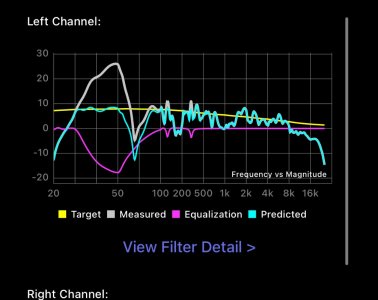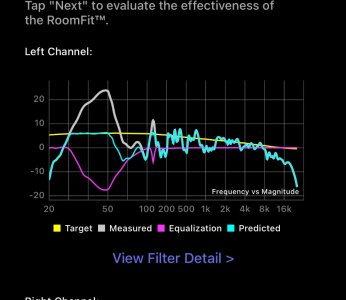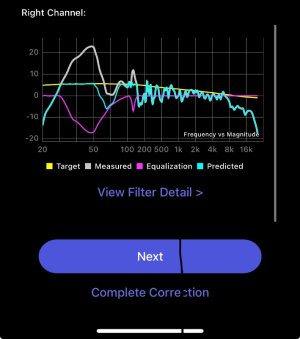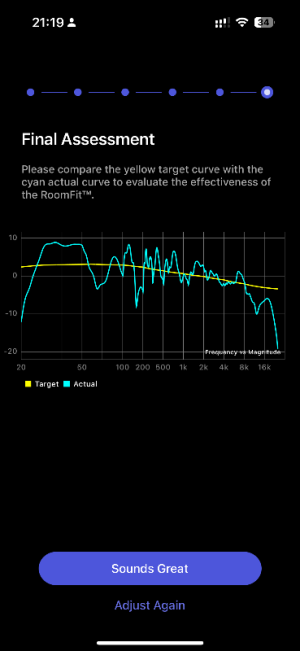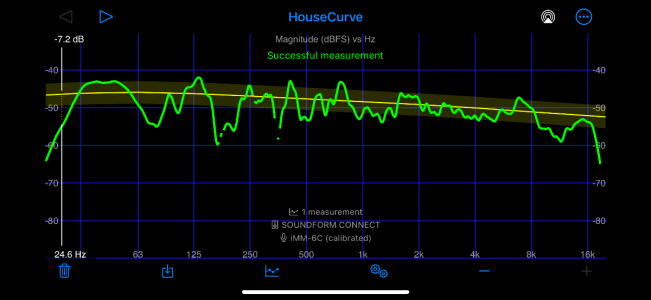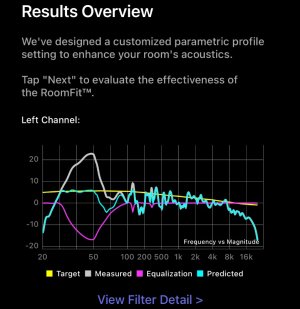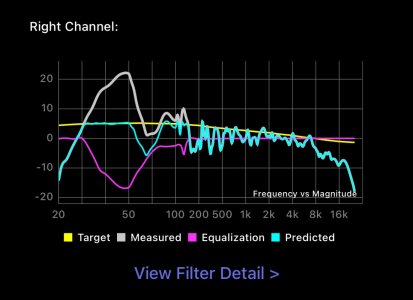So, again taking a opportunity of these discussion I did some testing:
My listening (for this setup) room is my bedroom, sqarish, about 12 m2, there is not much space because of master bed, and my TV is located on the closet which is not centered. I put speakers by TV, one on stand and one on closet next to TV. They (speakers) are around 15cm from rear wall (that's way I decided to buy front ported), left one is about 80 cm from side wall, right one is around 1,3m from side wall. Sub is located between left speaker and side wall (circa 15 cm from the corner).
My RoomFit settings as for today test:
BK Curve 20-400hz
Cut-Only Mode
Positive Gain 3,5 db, Negative -12db, Q 12db
Individual L/R
Mic Dyton IMM 6C, Calibration file enabled
Single Sweep
Sub cross: 70Hz
Phase on sub and in Wiim App: 180
Speaker vs sub latency : 3ms (calculated by Wiim, sub in the same line as speakers)
Sub by pass mode and Mains output bass : off (although I got the feeling that with this second option sound is fuller)
Results from today:
View attachment 25980View attachment 25981
and here is control sweep in HouseCurve
View attachment 25982
I can't get rid of dip around 150-170 no matter of setting I use. I tried to play with subwoofer cross, phase (witch brings some impact to overall result) but this dip is higher than crossover so I don't know if it matters. Another dip is around 70 so maybe it is sub cross related.
I can't rearrange speakers much, I can put them very close to wall, or toe them in but rather can't replace it
The problem that I try to fight from a long time is (and I don't know how to explain it properly): when there is bass line (most scenarios) some notes are played with full deep bass but when melody pattern goes, others are thin, like it can be heard that they are with less volume and body. There are songs with like 3 notes bass pattern and I can hear audible differences between for example second and third one. When I hear the same song on my AirPods I can hear then as melody goes all bass line notes are played with the same volume/body/bass impact so to say. And I don't know what to do frankly speaking. Is is the gear, the room itself, gear placement/quality or acoutitcs.
In terms of harshness reduction, Elac's Spinorama eq seetings work similar to 1,6 kHz HS filter that I experimented with. In some scenarios it works, but for some it affects bass/mids/trebles balance and bass and mids are too much presented, especially if RoomFit is more bass oriented.
Here are 5 cents from my side , hope someone can assess my results and help get better ones, and resolve my problems.
best regards
K

